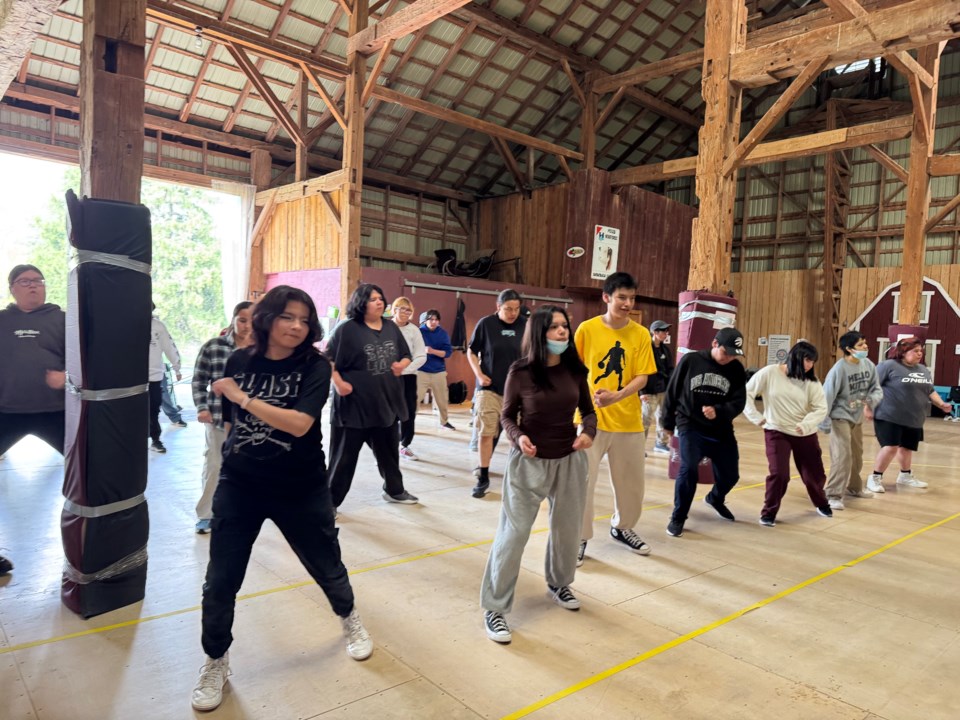BRANT — Indigenous youth from across northwestern Ontario are enjoying the opportunity to prepare for Outside Looking In’s (OLI) 18th Annual Showcase, this Thursday in Toronto.
This year’s showcase, which features more than 100 dancers from 14 Indigenous communities in Manitoba, Nunavut, Ontario, Quebec and Saskatchewan, will fuse hip-hop and Indigenous cultures in a high-energy theatrical experience that takes audiences on an awe-inspiring journey of transformation and resilience at the Toronto Metropolitan University’s Chrysalis performing arts space.
“The first year that I went, it was an amazing experience,” says Madi Ottertail, an OLI alumni from Gakijiwanong Ainishinaabe who has performed in six of OLI’s showcases. “It was something I never experienced beforehand, it also helped me to break out of my shell.”
Ottertail says her alumni role is much different from being one of the students. The OLI Alumni program offer three streams, the Propeller stream for alumni interested in paid employment with OLI, the Bridge stream for alumni preparing for post-secondary education and the Excelerator stream for alumni enrolled in post-secondary education.
“There is a lot more added responsibility, with like helping out around camp, helping out with the students, making sure everything is going smoothly,” Ottertail says. “We do serve as mentors in a way because we’ve been through the program and we know what it’s like as a student.”
Dez Peters, a youth from Pikangikum who is performing in her fourth OLI showcase, says this is her second year with OLI’s RBC Future Leaders program.
“We get an extra dance in the Future Leaders program, we do Zoom meetings during the first few months during the OLI program,” Peters says. “And then we get assigned with mentors on what we want to become in the future or what to do in the future.”
Peters says she will be performing three dances, including the opening ceremony, during the showcase.
“What I like the most being at OLI is building up my physical health and my mental health,” Peters says. “It’s been really helping me and I really like making new friends from other communities and just learning what they do in their communities and just seeing everybody’s dance and feeling empowered by their dances and being inspired with how creative they are.”
Junebug Strang, a youth from Pikangikum, says this is his second year in the OLI program.
“I’ve actually enjoyed being in this program so far because I could experience the physical activities, the joy and having a good time with people around me,” Strang says. “We’re going to be doing the opening ceremony, our community feast, the Future Leaders feast and the closing number.”
Brooklyn Shewaybick, a youth from Webequie, says this is her first year in the OLI program.
“It’s fun and there’s cool people that I met,” Shewaybick says, noting that a friend had encouraged her to join the OLI program. “I like the dance. It’s not really my main hobby that I like to do, but it’s fun to do.”
Candace Scott-Moore, artistic director at OLI, says she wanted to get involved with OLI after attending last year’s showcase.
“It was very emotional for me, I was filled with pride, I was filled with excitement and just to see what these young people were doing, I was like I really wish I could be a part of this,” Scott-Moore says. “It’s more than a dance performance, it’s building leaders and it’s bringing different forms of art and expression to the community, and the dance piece of the show in Toronto is one part of the bigger picture.”
Hope Sanderson, CEO at OLI, says the demand for OLI’s program has continued to grow since it was founded in 2007.
“As soon as the pandemic started to open up, demand for our program grew as a healthy and culturally relevant program to support youth in really getting back integrated into the academics and getting back to school and just starting to move in a positive and healthy and exciting and fun way,” Sanderson says. “We use dance as the hook to keep Indigenous kids in school and the reason we do that is because on reserve in Canada the completion rate for high school is about 45 per cent.”
Sanderson says students have to achieve certain academic levels in order to stay in the OLI program.
“And to come to this show, they have to earn even higher academic standards,” Sanderson says. “We use dance as a motivator to keep kids in school and get them their credits to get them through high school, and they love coming to Toronto and performing live on stage before an audience of thousands.”
